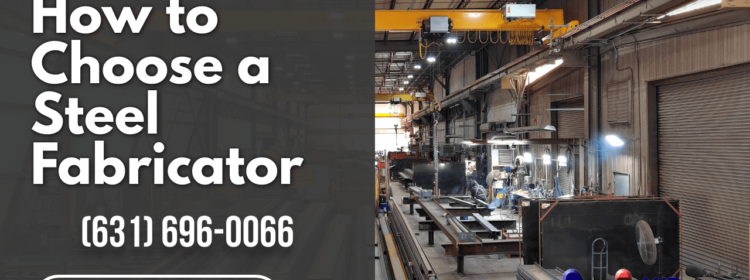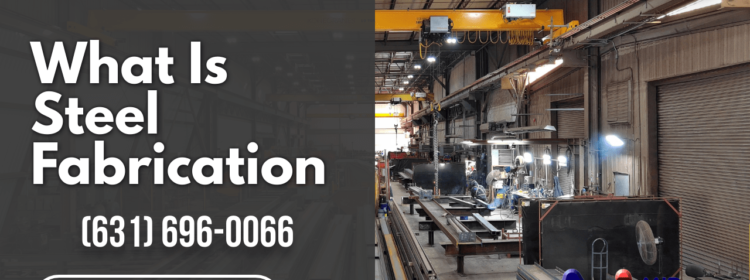Choosing a Steel Fabricator
When it comes to choosing a steel fabricator for your project, there are several key factors to consider. From their level of experience and expertise in working with metal materials to their ability to produce custom designs, a steel fabricator can play a crucial role in the success of your project. In this article, we will discuss the importance of their industrial experience, their capabilities in producing custom metal products, and the valuable insights they can provide in selecting the most suitable metal fabrication for your needs. By understanding these factors, you can make an informed decision when selecting a steel fabricator that can meet your specific requirements and deliver high-quality products.
Quality Standards
When it comes to choosing a steel fabricator, quality standards should be a top priority. Ensuring that your chosen steel fabrication shop can deliver high-quality products is paramount to the success of your custom steel fabrication project. But how do you evaluate a metal fabrication companies commitment to quality? Here are some key factors to consider.
First and foremost, experience matters. Look for a steel fabrication company with a proven track record and a portfolio of past metal fabricator work that demonstrates their expertise and craftsmanship. Client testimonials can also provide valuable insights into the quality of the metal fabrication shops work and level of customer satisfaction.
Quality assurance measures are another crucial aspect to evaluate. A reputable steel fabricator should adhere to regulatory standards and have in-house testing facilities to ensure that all products meet quality requirements. Metrics tracking is also important in monitoring and improving the overall quality of the fabrication process.
In terms of specific quality control measures, look for a company that conducts material integrity checks to ensure the suitability of the metal alloy being used. Additional tests such as hardness tests and ultrasonic inspections can provide further assurance of the structural integrity of the fabricated steel.
By considering these quality standards, you can make an informed decision when choosing a steel fabricator. Remember, quality should never be compromised for the sake of cost or convenience. Choose a steel fabrication partner that prioritizes consistent quality, customer satisfaction, and the use of modern technology.
Production Capacity
When choosing a steel fabricator, it is important to consider their production capacity. This refers to the metal fabrication companies ability to handle and deliver your steel fabrication project on time and within budget.
One aspect of production capacity to evaluate is their cutting and metal-forming capabilities. A reputable fabricator should have state-of-the-art machinery and equipment for precision cutting and shaping of steel. This ensures that your project is accurately fabricated according to your specifications.
Assembly and welding capabilities are also crucial. Look for a fabricator that has skilled welders and a dedicated assembly team. This ensures that all components are properly joined together, resulting in a structurally sound final product.
Furthermore, consider the fabricator’s fabrication and installation capabilities. They should have the expertise and resources to handle the entire fabrication process, from design to installation. This streamlines the project and minimizes coordination issues.
Lastly, don’t forget to assess their metal finishing services. A reputable fabricator should have the ability to provide various finishing options, such as painting, powder coating, and galvanizing. This ensures that the fabricated steel meets your aesthetic and functional requirements.
In addition to these aspects of production capabilities, it is also important to consider the fabricator’s facility. Look for a facility with adequate production space to handle your project. Assess their materials receiving and packing/shipping capabilities to ensure efficient logistical operations.
By considering the production capacity of a metal fabrication shop, you can choose a partner that is capable of delivering your metal fabrication project with precision, quality, and efficiency.
Turnaround Times
When selecting a steel fabricator for your metal fabrication project, turnaround times play a crucial role in meeting your project deadlines. Quick delivery is essential, but it should not compromise the quality of the final product.
A reputable steel fabrication company understands the importance of efficient turnaround times and strives to meet your project schedule. They have a streamlined production process in place, allowing them to efficiently fabricate steel components without sacrificing quality. This includes having experienced design engineers who can provide realistic delivery expectations based on the complexity and size of your project.
Balancing quick turnaround times with high-quality work is key. While you want your project completed in a timely manner, it is equally important to ensure that the fabrication is done to the highest standards. This ensures the durability and longevity of the fabricated steel components.
By choosing a steel fabricator that prioritizes turnaround times while maintaining quality, you can have the reassurance that your project will be completed within your specified time frame. This not only minimizes downtime but also allows for timely installation and progress on your overall project. So, when selecting a steel fabricator, consider their ability to deliver a high-quality product within your required turnaround times.
Raw Materials and Metal Alloys
Raw materials and metal alloys play a crucial role in steel fabrication projects. The choice of materials depends on various factors such as project requirements, environmental conditions, and desired aesthetics. It is important to work with a steel fabricator who understands the characteristics and properties of different materials to ensure the success of your project.
One commonly used material in steel fabrication is wrought iron. Known for its durability and malleability, wrought iron is often used in decorative applications like railings and gates. Bronze is another popular choice due to its corrosion resistance and attractive appearance. It is commonly used in architectural features and sculptures.
Stainless steel is highly sought after for its resistance to rust and staining, making it suitable for applications where hygiene and durability are essential, such as in the food and pharmaceutical industries. Other metals like copper and brass are also used for their unique attributes, including their aesthetic appeal and electrical conductivity.
Choosing the right material for your steel fabrication project requires expertise from the fabricator. They need to consider factors such as the project’s purpose, environmental conditions, and the desired longevity of the components. A knowledgeable fabricator will guide you in selecting the most suitable material that meets your project requirements and budget constraints, ensuring the success and longevity of your steel fabrication project.
Custom Metal Products
Custom metal products are versatile and can be created by a steel fabricator to suit specific design requirements. A skilled fabricator can work with various metals, including wrought iron, bronze, stainless steel, copper, and brass, to produce a wide range of custom products.
Wrought iron is a popular choice known for its durability and malleability. It can be formed into intricate shapes, making it ideal for decorative applications like railings and gates. Bronze, on the other hand, is valued for its corrosion resistance and attractive appearance, making it commonly used in architectural features and sculptures.
Stainless steel is highly sought after for its resistance to rust and staining. It is suitable for applications where hygiene and durability are essential, such as in the food and pharmaceutical industries. Copper and brass are also used for their aesthetic appeal and electrical conductivity, making them suitable for decorative fixtures and electrical components.
To enhance the finish and performance of custom metal products, options like powder coating and COR-TEN® steel can be applied. Powder coating provides a durable and aesthetically pleasing finish by applying a protective layer to the metal. COR-TEN® steel, on the other hand, is a weathering steel that develops a rust-like appearance over time while maintaining structural integrity.
Collaborating with a steel fabricator experienced in working with different metals and finishing options ensures that your custom metal products are of the highest quality, meeting both functional and aesthetic requirements.
Installation Processes
When it comes to steel fabrication, installation processes play a crucial role in ensuring the success of a project. From storage and delivery to the actual product creation, each step in the installation process requires careful attention to detail.
Firstly, proper storage of raw materials is essential to maintain their quality. Steel fabricators should have the capability to store materials in a controlled environment to prevent any damage or contamination. Additionally, efficient and timely delivery of materials to the project site is crucial to avoid delays and keep the project on schedule.
Next, the product creation phase involves cutting, shaping, and welding the steel to the desired specifications. It is important to choose a steel fabricator that utilizes advanced fabrication technology and tools. This ensures accurate and precise manufacturing, resulting in high-quality finished products.
By selecting a steel fabricator with expertise in installation processes, you can be confident that your project will be handled with professionalism and efficiency. They will have the necessary knowledge and experience to navigate any challenges that may arise during the installation process.
In conclusion, when choosing a steel fabricator, consider their capabilities in storage, delivery, and product creation. Additionally, ensure that they utilize modern fabrication technology to ensure the successful installation of your steel products.
Hidden Costs and Fees
Hidden Costs and Fees in Steel Fabrication: How They Impact Your Project Budget and Timeline
When selecting a steel fabricator for your project, it’s important to be aware of the potential hidden costs and fees that may arise throughout the fabrication, delivery, and installation stages. These additional expenses, if not properly accounted for, can have a significant impact on your project budget and timeline.
One common example of hidden costs in steel fabrication is the inclusion of premium materials. Some fabricators may quote a lower price initially, but then charge a premium for using higher-quality materials. This can drastically increase your overall project cost.
Similarly, additional fees may be charged for rush orders or expedited delivery. While these services may be necessary in some cases, it’s crucial to confirm any additional charges upfront to avoid surprises later on.
Installation-related expenses can also add up quickly. Hidden costs may include unexpected transportation fees, specialized equipment rentals, or even labor charges for unforeseen circumstances during the installation process.
To mitigate these hidden costs and fees, it’s crucial to thoroughly communicate and establish transparency with your chosen steel fabricator. Discuss your project budget and timeline upfront, ensuring that they provide a detailed breakdown of all costs. Requesting itemized quotes for fabrication, delivery, and installation can help identify any potential hidden fees early on.
By taking these steps, you can make informed decisions and choose a steel fabricator who not only delivers quality products but also operates transparently, ensuring your project stays on budget and on schedule.
Challenges of the Task at Hand
When it comes to selecting a steel fabricator for your project, one of the biggest challenges is ensuring that the task at hand is carried out smoothly and efficiently. Without the right fabrication company, you may encounter various challenges that can significantly impact the outcome of your project.
Design and quality issues are common challenges that can arise if the chosen fabricator lacks the necessary expertise and experience. Improper design or subpar quality of fabricated steel can lead to structural issues, safety concerns, and even project failure. Therefore, it is vital to choose a steel fabricator with a proven track record of delivering high-quality products and adhering to stringent quality standards.
Another challenge is time delays, which can have detrimental effects on your project’s timeline and budget. Steel fabrication is a complex process involving multiple stages, and any delays in the manufacturing or delivery process can result in significant setbacks. It is essential to select a fabricator with a robust production capacity and efficient turnaround times, ensuring that your project stays on track.
Financial losses can also occur if the fabricator does not have the necessary resources to handle your project. Inadequate raw materials, outdated equipment, and a lack of skilled workforce can lead to increased manufacturing costs, subpar products, and costly rework. Therefore, it is crucial to assess the fabricator’s level of experience, manufacturing capabilities, and available resources before making a decision.
In conclusion, the challenges of the task at hand when choosing a steel fabricator include design and quality issues, time delays, and financial losses. To mitigate these challenges, it is crucial to select a fabricator with a proven level of experience, a competent workforce, and adequate resources to handle your project effectively.
Researching Potential Partners
When researching potential steel fabrication partners, there are several key aspects to consider.
Firstly, it is important to evaluate their industry experience. Look for fabricators who have a proven track record in steel fabrication projects and a deep understanding of the codes and regulations that govern the industry. This knowledge ensures that your project will be compliant and meets all necessary safety standards.
Secondly, review their past projects, references and customer testimonials. This will give you valuable insights into their capabilities, the quality of their workmanship, and their ability to deliver on time and within budget. It’s also a good idea to speak with their previous clients to gather firsthand feedback on the fabricator’s performance and customer service. They should be able to provide a list of previously satisfied customers.
Another important factor is their ability to provide efficient methods and cost-saving strategies. A reputable steel fabricator should be able to propose innovative solutions that maximize production efficiency, minimize waste, and ultimately reduce costs. Discussing these strategies with potential partners will help assess their expertise and determine if they can deliver not only quality products but also value for your investment.
Lastly, communication is key. Open and transparent communication channels are crucial for the success of any steel fabrication project. Ensure that the fabricator is responsive, proactive, and willing to collaborate throughout the entire process.
By thoroughly researching potential steel fabrication partners, considering their industry experience, reviewing past projects and references, and discussing efficient methods and cost-saving strategies, you can make an informed decision and choose a partner that will meet your project requirements.
Consider an Expert Steel Fabrication Company Mid-Island Steel
When it comes to choosing a steel fabrication company, experience and expertise are key factors to consider. That’s why Mid-Island Steel in Medford, NY should be your go-to choice. With over 40 years of industry experience, they have solidified their reputation as an expert steel fabrication company.
Mid-Island Steel prides itself on its commitment to quality. They have a team of skilled professionals who are well-versed in the latest industry codes and regulations, ensuring that your steel fabrication project is compliant and meets all necessary safety standards.
One of the benefits of choosing Mid-Island Steel is their use of state-of-the-art machinery. They utilize Peddinghaus, Marvel, and Miller equipment, which allows for precise and efficient fabrication processes. This ensures that you receive top-notch quality products that meet your specifications.
Additionally, Mid-Island Steel offers all-in-one services, including detailing and delivery. They have the capability to handle every aspect of your project, from design to installation, making them a one-stop solution for all of your steel fabrication needs.
When it comes to expert steel fabrication, Mid-Island Steel is the name you can trust. With their vast experience, expertise, and commitment to quality, they are sure to deliver exceptional results for your project. Get in touch with Mid-Island Steel today and experience the difference an expert steel fabricator can make.


